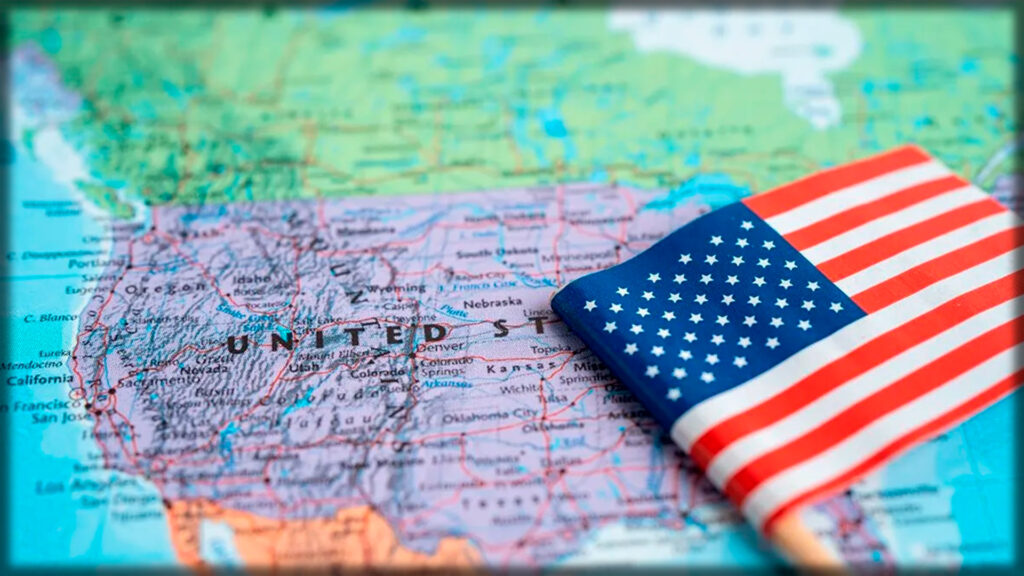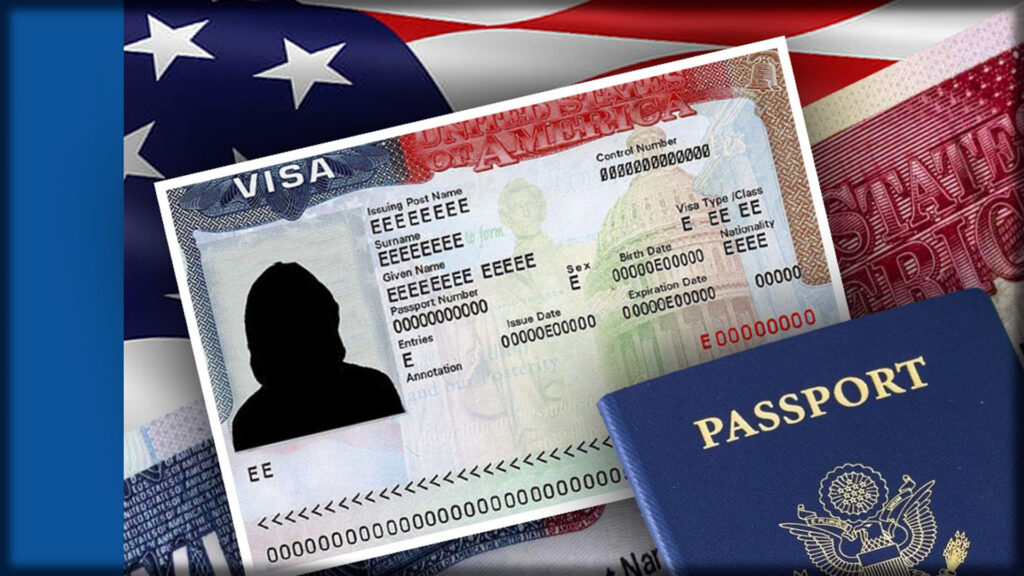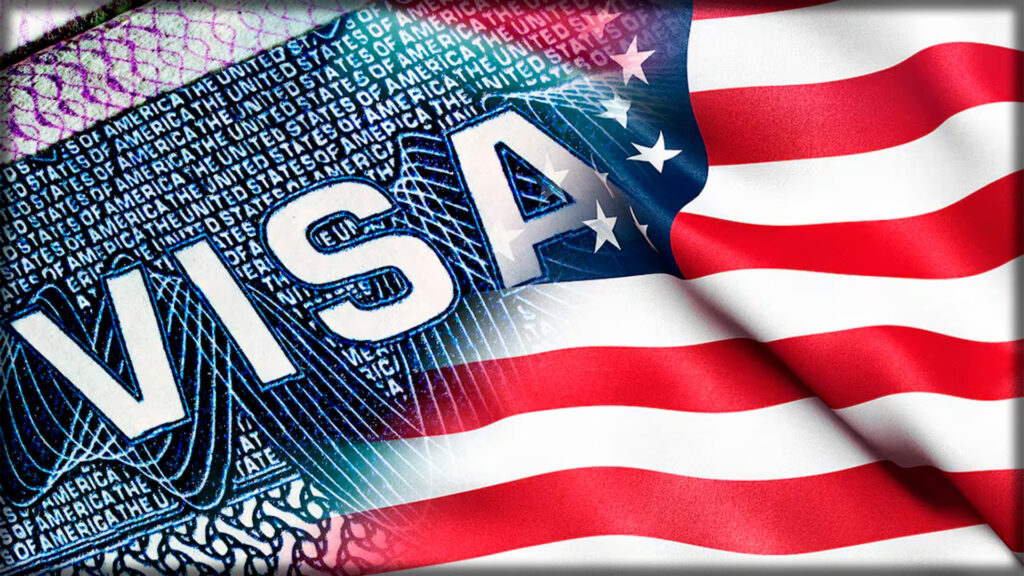How to Work in the United States with a Visa: Complete Guide 2025
Working in the United States is a dream shared by millions of people. For some, it means achieving the financial stability they have always sought; for others, it represents the possibility of professional growth, learning new skills, and giving their family a better future. But turning that dream into reality requires following a very clear path: obtaining the right work visa and meeting all legal requirements.
This guide is not just a list of procedures. I have written it to answer those questions we all have when thinking about emigrating: Which visa applies to me? What documents should I prepare? What will they ask me in the interview? What happens if I lose my job? Here you will find the answers step by step.
Why choose the United States to work in 2025?

Before getting into technical matters, it’s worth stopping at a basic question: what makes the United States one of the most desired work destinations in the world?
- Diverse and enormous labor market: The United States has jobs for almost every profile. From seasonal agricultural work, construction, and services, to highly specialized positions in technology, finance, and healthcare companies.
- Higher salaries: To put it in perspective, a basic job in the U.S. can pay you the same as a professional job in many Latin American countries. That difference is what motivates thousands of people to make the effort.
- Economic stability: Even in times of global crisis, the U.S. economy remains strong and in high demand for labor.
- Residency opportunities: Several work visas, over time, can open the door to permanent residency (Green Card).
- International experience: Having on your résumé that you worked in the U.S. gives you prestige and added value that carries weight anywhere in the world.
In summary: it’s not just about earning more money, but about opening a path toward a better future.
Types of work visas in the United States
One of the most common mistakes is to think there is only one “work visa.” In reality, there are different categories, each adapted to specific needs:
H-1B Visa
The most well-known for professionals with a university degree in specialized fields. Engineers, doctors, programmers, scientists, and other highly qualified profiles apply here. Its great advantage is that it is often the first step toward residency, but it is also one of the most competitive.
H-2B Visa
Designed for temporary non-agricultural jobs. Hospitality, construction, cleaning, maintenance, or tourism are some of the sectors that use it the most. You don’t need to have a university degree, which makes it accessible for thousands of people.
H-2A Visa
Exclusively designed for the agricultural sector. It allows farms and companies to hire foreign workers during planting and harvesting seasons. It is often one of the visas with the highest number of openings each year.
L-1 Visa
For employees working at a company based in their country who are transferred to a U.S. branch. Very common in multinationals that need to move staff between offices.
O-1 Visa
Known as the visa for people with extraordinary abilities. It is aimed at artists, athletes, scientists, or entrepreneurs recognized internationally. It is not easy to obtain, but it is ideal for those who have excelled in their field.
Tip: before starting an application, research well which of these visas fits your situation. Applying for the wrong visa could mean losing time, money, and opportunities.

General requirements to apply for a work visa
Although each visa has particular rules, there are certain requirements that will almost always be present:
- Real job offer: it’s not enough to want to work in the U.S.; you need a formal letter from a company hiring you.
- Employer sponsorship: it is the company that must file the initial petition with the U.S. government.
- Proven education or experience: university degrees, technical certificates, or documented work experience.
- Valid passport and consular interview: you must attend the U.S. Embassy or Consulate in your country.
- Clean record: no serious criminal history that may prevent your entry.
Something very important that many people don’t know: the process doesn’t start in your hands, but in those of the employer. You cannot directly apply for a work visa if you don’t first have a sponsor in the U.S.
Step-by-step process to obtain your work visa
Let’s calmly go through the typical procedure:
Find a job in the U.S.
This is the first and most difficult step. You must find companies willing to hire foreigners and that have experience sponsoring visas. Websites such as the Department of Labor’s portal or international job platforms can help.
The employer submits the petition
Once the company selects you, it begins the process with the Department of Labor or with USCIS. This step is crucial because without their approval, you cannot move forward.
Petition approval
If your application is approved, you will receive a case number. This document will be your key to continue in your country.
Fill out the DS-160 form
It is the official application for your visa. You must complete it online with your personal information, work history, and other details.
Pay consular fees
Each visa has a different cost, but generally ranges between $190 and $500.
Schedule an interview at the Embassy
Here you will present your documents and answer questions about your job, experience, and plans.
Consular interview
This is the decisive point. You must show confidence and coherence in your answers. Remember: officers seek to confirm that your job is real and that you will return to your country if your visa expires.
Approval and visa issuance
If everything goes well, your passport will be returned with the visa stamped and you will be able to travel to the United States to work legally.
Benefits of working with a visa in the United States
Those who achieve this goal enjoy enormous advantages:
- Stable and high income: even in temporary jobs.
- Access to permanent residency: some visas can become a Green Card.
- Legal protection: working with a visa gives you security against labor abuse.
- Possibility to bring your family: several categories allow dependent visas.
- International experience: living and working in the U.S. opens doors anywhere in the world.

The 10 Highest-Paying Jobs for Foreigners in the U.S.
One of the most frequent questions is: which jobs are truly worth it in terms of salary?
Professions such as doctors, dentists, software engineers, pharmacists, specialized lawyers, and pilots are among the top earners, with incomes exceeding $150,000 a year.
But it’s not only about money: these jobs also offer prestige, stability, and, in many cases, the chance to eventually obtain permanent residency.
👉 For full details on salaries, requirements, and opportunities, read:
👉 [The 10 Highest-Paying Jobs for Foreigners in the U.S.]
How to Get a Job in the U.S. Without Experience
Not everyone arrives with a university degree or years of work experience. Many dream of starting from the bottom, even with no background—and the good news is: it’s possible.
Sectors like agriculture, construction, restaurants, hospitality, and logistics offer thousands of jobs every year for people who have never worked formally or who want to start fresh.
In these cases, attitude matters most: showing willingness, responsibility, and eagerness to learn. An entry-level job can be the first step toward something much bigger.
👉 For a step-by-step guide, check:
👉 [How to Get a Job in the U.S. Without Experience]
The Best States for Immigrants Seeking Work in the U.S.
The U.S. is a vast country, and each state has its own economic reality, cost of living, and labor demand. Working in California, with its high salaries but equally high living costs, isn’t the same as working in Texas, with competitive wages and lower costs.
States like Florida are ideal for tourism and service jobs; New York offers diversity and prestige but comes with higher expenses; while Illinois, Arizona, and Nevada are growing and increasingly in need of foreign labor.
👉 For a detailed breakdown of where the best opportunities are, see:
👉 [The Best States for Immigrants Seeking Work in the U.S.]
How to Apply for Jobs Online from Your Country
Thanks to the internet, it’s no longer always necessary to travel first to start looking for a job. Many hiring processes now begin online, and more employers are willing to interview foreign candidates via video call.
Platforms like LinkedIn, Indeed, Glassdoor, and USAJobs are used by both large corporations and smaller employers. The key is preparing a U.S.-style résumé and learning to spot real offers that include visa sponsorship.
👉 For a practical guide, check:
👉 [How to Apply for Jobs Online from Your Country to the U.S.]
Temporary Jobs in the U.S. for International Students
If you’re a student, you also have options. The F-1 and J-1 visas allow limited work under certain programs:
- On-Campus Employment: jobs within the university campus.
- CPT & OPT: internships tied to your degree, even after graduation.
- Work and Travel: summer jobs in tourism, hotels, and restaurants.
- Au Pair: childcare with housing included.
These jobs not only help financially, but also enrich your cultural and academic experience.
👉 For full details and requirements, see:
👉 [Temporary Jobs in the U.S. for International Students]
Common Mistakes When Applying for a U.S. Work Visa
This is one of the most delicate parts of the process. Thousands of visa applications are denied each year—and often, not because the person isn’t qualified, but because of simple, avoidable mistakes:
- Choosing the wrong visa.
- Filling out forms incorrectly.
- Not bringing all required documents.
- Arriving unprepared for the interview.
- Failing to prove ties to your home country.
The key is to be well-informed and prepare ahead of time. Avoiding these errors can significantly increase your chances of success.
👉 For a full article on the most common mistakes and how to avoid them, read:
👉 [Common Mistakes When Applying for a U.S. Work Visa]
Frequently asked questions everyone has
How long does the process take?
It depends on the visa, but normally between 2 and 8 months.
Do I need to speak English?
It’s not always a requirement, but without a doubt a huge advantage. For professional jobs, it is almost always required.
What happens if I lose my job?
Most visas grant a short grace period (30–60 days) to find another employer or return to your country.
Can I enter as a tourist and look for work?
No. It is illegal to work with a tourist visa. Doing so can have serious consequences: deportation and re-entry bans.
How much does the whole process cost?
Between consular fees, paperwork expenses, and attorney fees (if you hire lawyers), the amount can range between $500 and $3,000.
Working in the United States is possible, but it’s not just about dreaming—it’s about preparing. From choosing the right state, identifying the highest-paying jobs, applying online, or even starting without experience, every step is part of the path that can change your life.
In 2025, opportunities are out there. What makes the difference is the information you have, the steps you take, and the mistakes you avoid.
Remember: the first step toward your goal is preparation—and preparation begins with the right information.